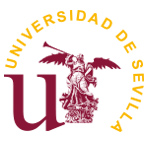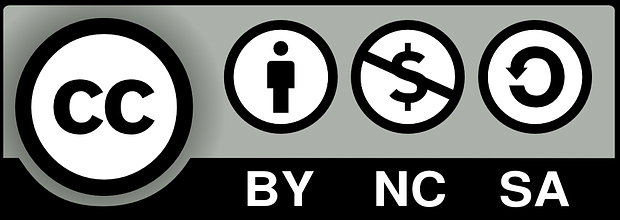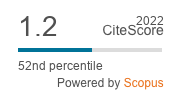Actions recommended by students for the successful achievement of distance learning degree studies
DOI:
https://doi.org/10.12795/revistafuentes.2023.23161Keywords:
Distance Education, Dropout, Needs analysis, SuccessAbstract
Taking as a reference the high drop-out rates that affect Distance Education, this research presents a comparative description of the perceptions of two groups of undergraduate students (new and experienced) in a Spanish public distance learning university on the actions that can be deployed by the institution to help them successfully complete their studies. A descriptive qualitative-quantitative approach with an exploratory purpose has been applied. The data was collected through a survey of a non-representative sample of 1,166 students in the 2021/2022 academic year. The results indicate that the most characteristic profile is still that of an employed person who chooses distance learning to combine it with their work or family activity, as well as a reduction in the average age of students, who would opt for this modality as their first choice. From the inductive content analysis, 16 thematic categories emerged that constitute a compendium of the actions that, from the students' perception, should be prioritised to support them in the successful completion of their degree studies, among them; increasing teacher feedback and supervision, improving teaching resources, intensifying the coherence and connection between the curricular components, offering more academic guidance, the possibility of taking the exams in a non-attendance-based manner and improving educational platforms.
Downloads
References
Alba-Fernández, M., y Mesa, L. (5-7 de septiembre de 2018). Acompañamiento al estudiante nóvel: Comunidades Virtuales de Acogida (CAV). Ponencia presentada en el I congreso internacional de orientación universitaria. Universidad de Zaragoza. https://zaguan.unizar.es/record/74811/files/BOOK-2018-021.pdf
Alebaikan, R., y Troudi, S. (2010). Blended learning in Saudi universities: challenges and perspectives. ALT-J Research in Learning Technology, 18(1), 49-59. http://dx.doi.org/10.1080/09687761003657614
Allen, E., y Seaman, J. (2017). Digital Learning Compass: Distance Education Enrollment Report 2017. Babson Survey. Research Group e-Literate, and WCET. https://files.eric.ed.gov/fulltext/ED580868.pdf
Álvarez, D. (2021). Análisis del abandono universitario en España: un estudio bibliométrico. PUBLICACIONES, 51(2), 241–261. https://doi.org/10.30827/publicaciones.v51i2.23843
Álvarez, P. R., y López, D. (2017). Estudios sobre deserción académica y medidas orientadoras de prevención en la universidad de La Laguna (España). Revista Paradigma, 38(1), 48-71, https://doi.org/10.37618/PARADIGMA.1011-2251.2017.p48-71.id600
Asín, M., Cubela, J.M., y Senú, I. (2019). La orientación educativa en los cursos a distancia. Revista de Investigación, Formación y Desarrollo: Generando Productividad Institucional, 7(3). https://doi.org/10.34070/rif.v7i1
Boletín Electrónico de Noticias de Educación a Distancia (BENED) (junio de 2002). Es Educación a Distancia... https://www2.uned.es/catedraunesco-ead/boletin.html
Cabero, J., y Gisbert, M. (2002). Materiales formativos multimedia en la red. Guía para su diseño. SAV de la Universidad de Sevilla.
Cabrera, L. (2015). Efectos del proceso de Bolonia en la reducción del abandono de estudios universitarios: datos para la reflexión y propuestas de mejora. Revista Fuentes, (16), 39–62. http://dx.doi.org/10.12795/revistafuentes.2015.i16.02
Carrión, J. (2005). Una mirada crítica a la Enseñanza a Distancia (segunda parte). Revista Iberoamericana de Educación, 36(12), 1-13. https://doi.org/10.35362/rie36122740
Chen, C. C., y Jones, K. T. (2007). Blended-learning vs. traditional classroom settings: Analyzing students’ satisfaction with inputs and learning processes in an MBA accounting course. In B. N. Schwartz y A. H. Catanach (Eds.), Advances in Accounting Education: Vol. 8. Teaching and curriculum innovations (25–37). Emerald. https://doi.org/10.1016/S1085-4622(07)08002-9
Chiecher, A. C. (2019). Estudiantes en contextos de educación a distancia. Variables vinculadas con el logro académico. RIED-Revista Iberoamericana De Educación a Distancia, 22(2), 203–223. https://doi.org/10.5944/ried.22.2.23368
Chiecher, A. C. (2020) Competencias digitales en estudiantes de nivel medio y universitario. ¿Homogéneas o heterogéneas? Praxis educativa, 24(2), https://dx.doi.org/10.19137/praxiseducativa-2020-240208
Chiecher, A., y Melgar, M. F. (2018). ¿Lo saben todo? Innovaciones educativas orientadas a promover competencias digitales en universitarios. Revista Innovación Educativa, 10. http://dx.doi.org/10.32870/Ap.v10n2.1374
De George‐Walker, L., y Keeffe, M. (2010). Self‐determined blended learning: a case study of blended learning design. Higher Education Research & Development, 29(1), 1–13. https://doi.org/10.1080/07294360903277380
Fadde, P. J., y Phu Vu. (2014). Blended Online Learning: Benefits, Challenges and Misconceptions. En P. Lowenthal, C. S. York, y J. C. Richardson (Eds.), Online Learning: Common Misconceptions, Benefits and Challenges (33 – 48). https://peterfadde.com/Research/blendedonline13.pdf
García Aretio, L. (1999). Historia de la educación a distancia. RIED-Revista Iberoamericana De Educación a Distancia, 2(1), 8–27. https://doi.org/10.5944/ried.2.1.2084
García Aretio, L. (2009). ¿Por qué va ganando la educación a distancia? Editorial UNED.
García Aretio, L. (2017). Educación a distancia y virtual: calidad, disrupción, aprendizajes adaptativo y móvil. Revista Iberoamericana de Educación a Distancia, 20(2), 9 – 25. https://doi.org/10.5944/ried.20.2.18737
García Aretio, L. (2018). Blended learning y la convergencia entre la educación presencial y a distancia. RIED-Revista Iberoamericana De Educación a Distancia, 21(1), 9–22. https://doi.org/10.5944/ried.21.1.19683
García Aretio, L. (2019). El problema del abandono en estudios a distancia. Respuestas desde el Diálogo Didáctico Mediado. RIED. Revista Iberoamericana de Educación a Distancia, 22(1), 245-270. http://dx.doi.org/10.5944/ried.22.1.22433
García Aretio, L. (25 de mayo de 2020). De los exámenes presenciales a los exámenes en línea. El fraude. https://aretio.hypotheses.org/4508.
Garrison, D.R. (2016). E-Learning in the 21st Century: A Community of Inquiry Framework for Research and Practice. Routledge. https://doi.org/10.4324/9781315667263
Gaytan, J. (2015). Comparing Faculty and Student Perceptions Regarding Factors at Affect Student Retention in Online Education. American Journal of Distance Education, 29(1), 56-66. https://doi.org/10.1080/08923647.2015.994365
González-Benito, A. (2018). Revisión teórica de los modelos de orientación educativa. Revista Caribeña de Investigación Educativa, 2(2), 43 -60. https://doi.org/10.32541/recie.2018.v2i2.pp43-60
Guajardo-Leal, B. E., y Gallardo, K. E. (2021). Compromiso, motivación y persistencia de participantes en xMOOC. Revista de Educación a Distancia (RED), 21(66). https://doi.org/10.6018/red.44024
Guerrero-Bocanegra, B. (2023). Análisis de la dimensión social en las interacciones de los foros de acogida de la UNED y sus implicaciones para el diseño de un chatbot de orientación educativa. Revista Electrónica EDUCARE. https://doi.org/10.15359/ree.27-1.15844
Guerrero-Bocanegra, B. (2022). Tópicos frecuentes en los foros de acogida para el desarrollo de un chatbot de orientación inicial universitaria. Revista de Psicología y Educación, 17(2), 187-197. https://doi.org/10.23923/rpye2022.02.225
Guerrero, B. (2021). Detección de necesidades de orientación educativa de los estudiantes de nuevo ingreso en el Grado de Psicología de la UNED. Un estudio piloto. En II congreso internacional de orientación universitaria. Universidad de Valladolid. http://ciou2020.uva.es/comunicaciones-libres/
Gregori P., Martinez V., y Moyano-Fernandez J.J. (2018). Basic actions to reduce dropout rates in distance learning. Evaluation and Program Planning, 66 , 48-52. https://doi.org/10.1016/j.evalprogplan.2017.10.004
Klingsieck, K. B., Fries, S., Horz, C., y Hofer, M. (2012). Procrastination in a distance university setting. Distance Education, 33(3), 295-310. https://doi.org/10.1080/01587919.2012.723165
Korr, J., Derwin, E. B., Greene, K., y Sokoloff, W. (2012). Transitioning an Adult-Serving University to a Blended Learning Model. The Journal of Continuing Higher Education, 60, 2-11. http://dx.doi.org/10.1080/07377363.2012.649123
La Madriz, J. (2016). Factores que promueven la deserción del aula virtual. Orbis. Revista Científica Ciencias Humanas, 12(35), 18-40. http://ojs.revistaorbis.org.ve/index.php/orbis/article/view/31
Lassoued, Z., Alhendawi, M., y Bashitialshaaer, R. (2020). An Exploratory Study of the Obstacles for Achieving Quality in Distance Learning during the COVID-19 Pandemic. Education Sciences, 10(9), 232. https://doi.org/10.3390/educsci10090232
Luque, E., García, F., y de Santiago, C. (2013). El abandono y egreso en la UNED. IUEDoc2. IUED. UNED. http://e-spacio.uned.es/fez/eserv/bibliuned:501063/Luque_et_al_Abandono_Egreso_VI_Redes_2014.pdf
Manzano-Soto, N., y Roldán-Morales, C.-A. (2016). Análisis de necesidades de orientación del estudiante de primer año en la Universidad Autónoma de Occidente. REOP - Revista Española de Orientación y Psicopedagogía, 26(3), 121–140. https://doi.org/10.5944/reop.vol.26.num.3.2015.16404
Martínez, V. (2017). Educación presencial versus educación a distancia. La Cuestión Universitaria (9), 108-116. http://polired.upm.es/index.php/lacuestionuniversitaria/article/view/3582/3662
Means, B., Toyama, Y., Murphy, R., y Baki, M. (2013). The Effectiveness of Online and Blended Learning: A Meta-Analysis of the Empirical Literature. Teachers College Record, 115(3), 1–47. https://doi.org/10.1177/016146811311500307
Navarro-Martínez, O., y Peña-Acuña, B. (2022). Technology Usage and Academic Performance in the Pisa 2018 Report. Journal of New Approaches in Educational Research, 11(1), 130-145. http://dx.doi.org/10.7821/naer.2022.1.735
Organización para la Cooperación y el Desarrollo Económico (2015). E-learning in Higher Education in Latin America. OCDE. https://www.ipn.mx/assets/files/innovacion/docs/libros/la-educacion-a-distancia/Educacion-superior-distancia.pdf
Pérez, R., Sebastián, A., y De Lara, E. (1990). Servicios de Orientación en la UNED: demanda expresa y necesidades detectadas. Revista Iberoamericana de Educación Superior a Distancia, 3(1), 23-56.
Rivera Montalvo, D. (2011). Factores que inciden en la retención o deserción del estudiante a distancia. (Tesis doctoral). Nova Southeastern University. http://ponce. inter.edu/cai/tesis/derivera/index.pdf
Romero, M., y Barberà, E. (2015). Identificación de las dificultades de regulación del tiempo de los estudiantes universitarios en formación a distancia. Revista de Educación a Distancia (RED), (38). https://revistas.um.es/red/article/view/234121
Sánchez-Elvira, A. (2014). ¿Cómo iniciarse con éxito en el aprendizaje en línea?: La experiencia de la UNED en el entrenamiento de estudiantes autorregulados. En Los Recursos de Aprendizaje en Educación a Distancia: Nuevos Escenarios, Experiencias y Tendencias (pp. 144-173). Fidel Ramírez Prado y Claudio Rama. http://e-spacio.uned.es/fez/eserv/bibliuned:501049/Sanchez-Elvira_Iniciarseexito.pdf
Sánchez-Elvira, A., Bardisa, T., Ortí, M., Gómez, M., Santiago, Cristino de., Fernández, E., Amor, P.J., Pérez, A.M., y Rueda, M.B. (2003). Perfiles sociodemográficoes y rendimiento académico de los alumnos de la UNED. http://e-spacio.uned.es/fez/view/bibliuned:500798
Sánchez, M.ª F. (2001). La orientación universitaria y las circunstancias de elección de los estudios. Revista de Investigación Educativa, 19, 39-61. https://digitum.um.es/digitum/bitstream/10201/98452/1/02_RIE%20V19%20N1%202001.PDF
Santamaría, M. (31 mayo - 1 y 2 junio 2022). Visión longitudinal del abandono en las titulaciones de grado de la UNED en el EEES. Ponencia presentada en las XII Jornadas de Investigación en Innovación Docente de la UNED. https://canal.uned.es/video/629871e46f3c002b79382232
Sebastián, A., Ballesteros, B., y Sánchez, M.ª F. (1996). El Centro de Orientación, Información y Empleo de la UNED: una respuesta ineludible al servicio de los alumnos de educación superior a distancia. Revista Iberoamericana de Xducación Superior a Distancia, 7(1), 7-23.
Shantakumari, N., y Sajith, P. (2015). Blended learning: The student viewpoint. Annals of Medical and Health Sciences Research, 5(5), 323–328. https://doi.org/10.4103/2141-9248.165248
Tamayo, P. A., Herrero, A., Martín, J., Navarro, C., y Tránchez, J. M. (2020). Design of a chatbot as a distance learning assistant. Open Praxis, 12(1), 145-153. https://doi.org/10.5944/openpraxis.12.1.1063
Tascón, F. (14 de noviembre de 2022). La UNED de Ponferrada cierra matrícula con cifras similares al curso anterior. https://tinyurl.com/2h3q2t6f
Xavier, M., y Meneses, J. (2021). The tensions between student dropout and flexibility in learning design: The voices of professors in open online higher education. International Review of Research in Open and Distributed Learning, 22(4), 72-88. https://doi.org/10.19173/irrodl.v23i1.5652
Xavier, M., y Meneses, J. (2020). Dropout in Online Higher Education: A scoping review from 2014 to 2018. Barcelona: eLearn Center, Universitat Oberta de Catalunya. https://doi.org/10.7238/uoc.dropout.factors.2020
Yong, E., Nagles, N., Mejía, C., y Chaparro, C. (2017). Evolución de la educación superior a distancia: desafíos y oportunidades para su gestión. Revista Virtual Universidad Católica del Norte, 50, 80-105. http://revistavirtual.ucn.edu.co/index.php/RevistaUCN/article/view/814/1332
Published
How to Cite
Issue
Section
License
Copyright (c) 2023 Borja Guerrero-Bocanegra

This work is licensed under a Creative Commons Attribution-NonCommercial-ShareAlike 4.0 International License.
Authors who publish in this journal accept the following conditions:
Authors conserve the copyrights and cede to the journal the right for first publication, with the work registered with the attribution licence of Creative Commons, which allows third parties to use the published work as long as they mention the authorship and the first publication in this journal.
The authors may make other independent and additional contractual agreements for the non-exclusive distribution of the version of the article published in this journal (e.g. include it an institutional repository or publish it in a book) as long as it clearly indicates that the work was first published in this journal.
Authors are allowed and indeed recommended to publish their work on the internet (for example on institutional or personal pages) before and during the revision and publication process, because it can lead to productive exchanges and greater and faster dissemination of the published work (see The Effect of Open Access).
Accepted 2023-06-29
Published 2024-05-15
- Abstract 393
- PDF (Español (España)) 175
- HTML (Español (España)) 31
- EPUB (Español (España)) 23














